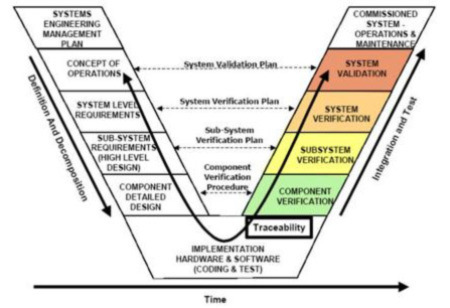
From Space Shuttles to Refrigerators: The Versatility of Systems Engineering

 Raj Kumar Pandey is the CEO and Executive Director of Airbornics Defence and Space Pvt. Ltd. (ADSL, A JCBL Group Company). He has more than 30 years of professional experience in business development, new product strategy, new product design and development, manufacturing operations management, and total quality management. Raj has been trained to handle technical evaluations by the Indian Ministry of Defence, the Defence Research and Development Organisation, and the Ministry of Home Affairs.
Raj Kumar Pandey is the CEO and Executive Director of Airbornics Defence and Space Pvt. Ltd. (ADSL, A JCBL Group Company). He has more than 30 years of professional experience in business development, new product strategy, new product design and development, manufacturing operations management, and total quality management. Raj has been trained to handle technical evaluations by the Indian Ministry of Defence, the Defence Research and Development Organisation, and the Ministry of Home Affairs.
Systems Engineering's use in creating new technological possibilities is crucial because it uses both technical and economic factors. According to you, how are system engineering and operations research co-related?
Systems Engineering is an overall approach that creates a typical ‘V’ instead of a series of work that is flat’—‘. Product development journey not only gets shortened but the quality of output also improves manifold. This is necessary for multi-physics and complex items like Defence& Aerospace. In Automotive, it is simpler, so we normally follow vehicle integration approach, which is similar.
Systems Engineering (SE) is a necessary process to successfully design and operate a complex system, however, the process can also be applied to the design of a simple system. An example of a large-scale, multi-million dollar, multi-disciplinary project is creating and operating the Space Shuttle Transportation System. A refrigerator is a simple system that could be designed using Systems Engineering. The process evolved to reduce risk, reduce development time and enhance product quality. Systems Engineering can also be applied to "system-of-systems", where individual systems interact as a functioning entity to accomplish a mission. For example, a naval task force consisting of distinct complex systems such as fighter aircraft, surface combatantShips, supply vessels, submarines, small utility crafts, etc.
Systems Engineering focuses on:
- Establishing, balancing and integrating stakeholders' goals, purpose and success criteria, and defining actual or anticipated customer needs, operational concepts and required functionality, starting early in the development cycle.
- Establishing an appropriate lifecycle model, process approach and governance structures, considering the levels of complexity, uncertainty, change, and variety.
- Generating and evaluating alternative solution concepts and architectures.
- Baselining and modelling requirements and selected solution architecture for each phase of the endeavor.
- Performing design synthesis and system verification and validation.
- While considering both the problem and solution domains, taking into account necessary enabling systems and services, identifying the role that the parts and the relationships between the parts play with respect to the overall behavior and performance of the system, and determining how to balance all of these factors to achieve a satisfactory outcome.
Systems Engineering provides facilitation, guidance and leadership to integrate the relevant disciplines and specialty groups into a cohesive effort, forming an appropriately structured development process that proceeds from concept to production, operation, evolution and eventual disposal.
Operational Research (OR) is the application of similar ideas (as collected from research) to larger, more complex decisions that concern the operations of systems, such as businesses and networks of machines. Making these decisions using OR entails employing mathematical methods in order to solve a numerical version of the problem at hand.
Systems Engineering (SE) is a necessary process to successfully design and operate a complex system, however, the process can also be applied to the design of a simple system. Worldwide many developed nation purchase wings in government based on Systems Engineering concept and hence they are able to better manage the project and get what they want.
Since we have a measure of performance at each step during Systems Engineering, it is very easy to implement operation research. While we follow the Systems Engineering approach, we use operation research to improve quality cost and deliverables.
With the promise of providing improved capabilities at extremely low costs, Systems Engineering and the acquisition of IT-intensive government systems got their start. Why does the information enterprise have such a difficult time introducing major new capabilities, despite technology advancements rapidly and is so cost-effective?
The root cause of this issue is the lack of understanding and implementation of the systems engineering approach. System engineering is not just a set of IT tools, but a science that needs to be embedded in the blood of participants and acted upon naturally. Without top management’s passion for this science, it becomes a burden, and IT tools cannot solve the problem. The solution lies in education, where top management must go through formal education to digest and implement the systems engineering approach. Senior education programs need to be started to achieve this goal.
How can a government department or entity enhance its Systems Engineering and acquisition use?
Most of the purchase acquisition wing, responsible for Capex buying, creates RFP. The current process of creating RFP is ‘Crtl ‘C’ (cut)’ and ‘Crtl ‘V’ (paste)’. Systems Engineering approach can only be followed if the first step is right: the system requirements and their acceptance criteria. Worldwide many developed nation purchase wings in government based on Systems Engineering concept and hence they are able to better manage the project and get what they want.
Public Sector units that are not only making purchases but also into development and production must follow Systems Engineering approach in totality. We are dealing with multi-physics complex topic and only way to get a fully functional integrated product is to follow proper technical program management techniques like systems engineering.
The SE's capacity to exert technical control is being hampered by the growing need toconnect existing systems to a system control. How to solve this issue and the difficulties Systems Engineering is experiencing will be addressed.
Once we have the proper training/skill and resources to conduct the approach, this issue will go away. We will have better control as each step in this approach is always defined by keeping the end in mind. It becomes very easy to look at deviations and possible reasons during the last journey.
Hence if we follow Systems Engineering approach in totality, we will have better system control and will be able to predict at each stage.